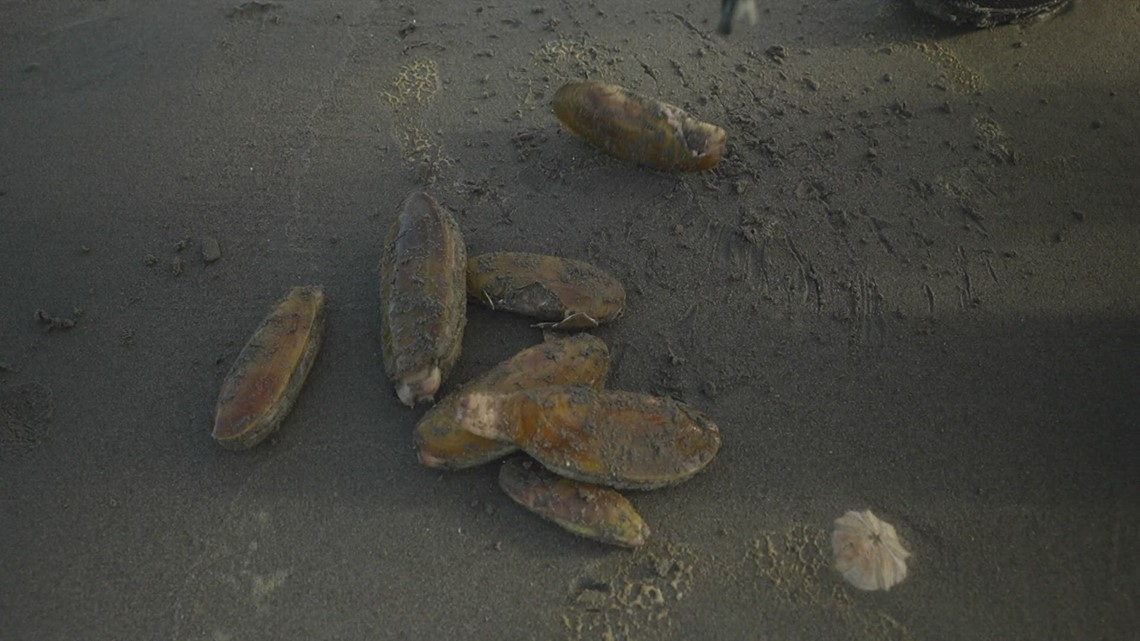Domoic acid: How the toxin can impact Washington's razor clam season
Digging for razor clams is a time-honored PNW tradition. Scientists, tribes and partners are working to make sure the shellfish are safe to eat. The Washington Department of Fish & Wildlife has announced tentative razor clam dig days stretching into May as scientists and others work to ensure the shellfish is safe to eat. The toxin domoic acid, which can cause amnesic shellfish poisoning and death in severe cases, can also cause permanent brain damage and upset stomachs. This toxin was first to cause the closure of razor clam digs in the 1990s when over 20 people were sickened from poisoned shellfish. Shellfish managers, scientists, tribes, and partners have been working to develop early monitoring and warning systems to protect people and protect industries and traditions across the northwest. The future of this toxin could be uncertain as researchers are exploring how a marine heatwave sparked a new domic acid hotspot on the West Coast.

게시됨 : 일년 전 ~에 의해 Erica Zucco ~에 Tech Environment Science
Digging for razor clams is a time-honored PNW tradition. Scientists, tribes and partners are working to make sure the shellfish are safe to eat.
Example video title will go here for this video
Example video title will go here for this video
LONG BEACH, Wash. — The Washington Department of Fish & Wildlife announced tentative razor clam dig days stretching into May as scientists and others work to ensure the shellfish are safe to eat.
Shellfish managers, scientists, tribes and partners have worked in recent years to develop and advance early monitoring and warning systems to protect people and safeguard industries and traditions across the northwest.
"It's a uniquely Northwest activity," Blumenthal said. "It's tied into our identity, it's something that people can do at all ages -- when they're born here, they can do it their whole life."
"The toxin that shuts us down most often and gets talked about the most is domoic acid," Blumenthal said. "Domoic acid causes amnesic shellfish poisoning, in severe cases it causes death and permanent brain damage and in mild cases it's an upset stomach and a pretty bad time - so it can be very serious."
The acid was first to blame for closing razor clam digs in the 1990s when more than 20 people got sick from poisoned shellfish. A Department of Health lab first discovered domoic acid in razor clams and the state cancelled the rest of the season.
The toxin grows after sunlight, warm temperatures and shallow water make algae grow faster into large blooms. There are several types - many harmless - across the northwest. But the type "pseudo-nitzschia" can produce the toxin domoic acid. Razor clams consume it, and while it doesn't kill them, it can cause sickness in people and animals who eat them.
When levels of domoic acid exceed a safe level, Fish & Wildlife must issue a closure. Both Washington and Oregon have been forced to do so sporadically near summertime or around marine heatwaves, though at this point the agency has not identified a clear trend line.
"The big question mark is, is this our new normal? Are we gonna see more, every other year or closure every other year?" Blumenthal said. "That's not the work we do, we just manage the fishery and roll with the punches as they come."
Some researchers are looking into what the future could bring. A recent study examined how a marine heatwave sparked a new domoic acid hotspot on the West Coast, and more work is being done to unearth trends.
In the meantime, scientists and local partners have developed early detection and warning systems to help gain a better understanding of exactly which areas are impacted, so closures only happen when they have to.
